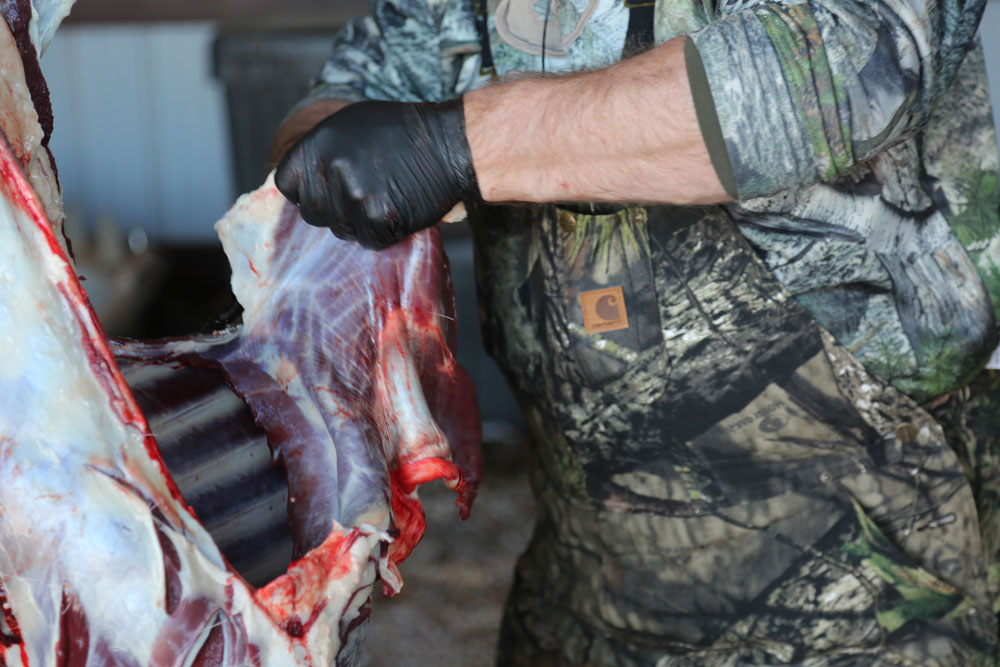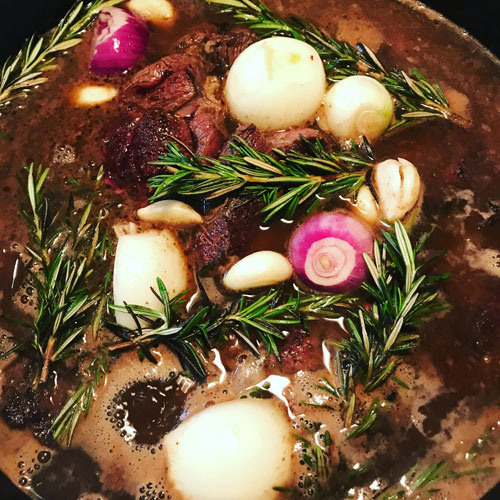Brad Fenson

A trained butcher sees value in every piece of an animal. There are the prime cuts that most people clamor over, but what do you do with the other, less popular cuts? In most cases, less desirable cuts can be translated into “people don’t know how to cook it.”
Many hunters butcher their own game, and it isn’t uncommon to see certain parts of meat remaining on the carcass for disposal. Throwing out shanks is a waste and disrespectful to the animal that provided its life for recreation and nutrition.
Shanks
One of the most underrated parts of an ungulate is the shanks. Most people see them as a mass of gristle between thin layers of meat. The shanks are braided with layers of support, as they are used heavily by animals that generate power from their lower legs.
If you went to a fancy Italian restaurant, you could order veal shanks, but they would be marketed and upscaled as ossobuco, which means "bone with a hole" (osso "bone", buco "hole"), a reference to the marrow hole at the center of the cross-cut veal shank. Fancy French restaurants often offer rosemary braised lamb shanks. The reason for explaining the fancy names is that deer have shanks that are just as flavorful and notorious as those on lamb, veal, or even beef, or pork hocks. You can put lipstick on a pig, and it’s still a pig, and the same goes for shank—you can dress it up with a fancy name but it’s still just shank.
 Deer shank can be cut through the bone or taken off the bone then cut into 1 ½- to 2-inch pieces, cut across the grain. Brown them up, add liquid and slow cook. The fancy word for slow cooking in the liquid is braise. Braised shank turns the silvers between the muscles into gelatin and collagen, which add to the flavor, become extremely tender, and are good for you.
Deer shank can be cut through the bone or taken off the bone then cut into 1 ½- to 2-inch pieces, cut across the grain. Brown them up, add liquid and slow cook. The fancy word for slow cooking in the liquid is braise. Braised shank turns the silvers between the muscles into gelatin and collagen, which add to the flavor, become extremely tender, and are good for you.
A slow cooker is ideal for braising deer shanks.
Flank
The flank is a cross of muscles under the ribs and across the belly. Many hunters discard the flank with the hide, but it is a wonderful piece of steak to marinade and grill. It is easy to remove and can be used as a stand-alone steak or cut into strips for tacos or fajitas.
Flank steaks have lots of flavors, just make sure you don’t overcook them. Grill, fry, or roast flank to discover new treats from your wild game.
Neck
The neck can often be challenging to deal with when cutting up a deer or other wild game. Most of the time the meat is trimmed as close as possible and used in burger. It does make terrific grind, but when you stop to consider where the meat is located, you may want to reconsider the grinder.
The rib steaks are backstrap that run over the front shoulders and up into the neck. One would hope nobody would grind the rib steaks, and the neck is just an extension of the braided muscles that form this prime cut.
Bone out the neck as one piece and you can roll it and tie it to cook as a roast. If you want to take things to a new level, try making stuffing for the neck roast and tie it tight with butcher twine. It is sure to be a winner no matter who you serve it to.

Need wild game meat for a recipe you've been wanting to try? Check out GameKeeper Butchery. GameKeeper Butchery is dedicated to procuring the finest assortment and highest quality of specialty meats from the United States and around the world. Our commitment is to deliver the safest, freshest and most wholesome products.






























